It’s not hard to see why Dubrovnik is one of Europe’s most popular destinations. With its impeccably clean stone streets, to its picturesque mass of orange terracotta rooftops, to its massive stone walls that have been used in so many films, there aren’t many old towns left in Europe that are as grand as this.

The bad news? Dubrovnik isn’t anyone’s best kept secret anymore. People have been coming for years and Game of Thrones has only added to its appeal. The old town is gridlocked with an impossible amount of tourists during the summer months and cruise ships swarm down on the city like locusts. Like every city in Europe that draws in tourists, visit in the fall and you’ll quickly see why it’s as special as it is.
Dubrovnik was one of the many places I visited on my Balkans trip. Read about it in my perfect two week itinerary for the Balkans.
Where we stayed in Dubrovnik
As Dubrovnik is an incredibly popular tourist destination, you’d be right to assume there is no shortage of where to stay in Dubrovnik. Whatever your budget, there are options to be had in Dubrovnik. Originally, I planned on staying in the old town but quickly learned that old town + summer equals a complete zoo so that option went out the door. Airbnb is very popular in Dubrovnik and there are some absolutely amazing options to be had.
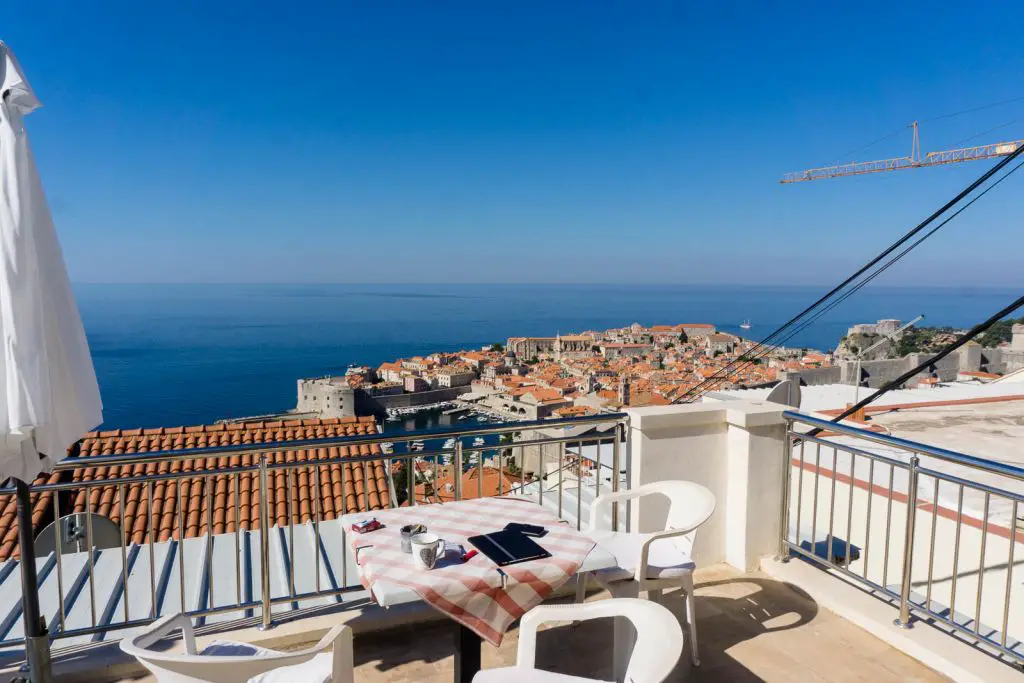
We ended up booking an apartment in the Ploce neighborhood directly behind the old town. Ploce is the closet neighborhood to the old town and is famous for its houses that are located on the mountain with direct views of the Adriatic and the old town. While the hotel options are limited in this neighborhood (Excelsior Hotel looked amazing), there is an abundance of guesthouses and Airbnbs.
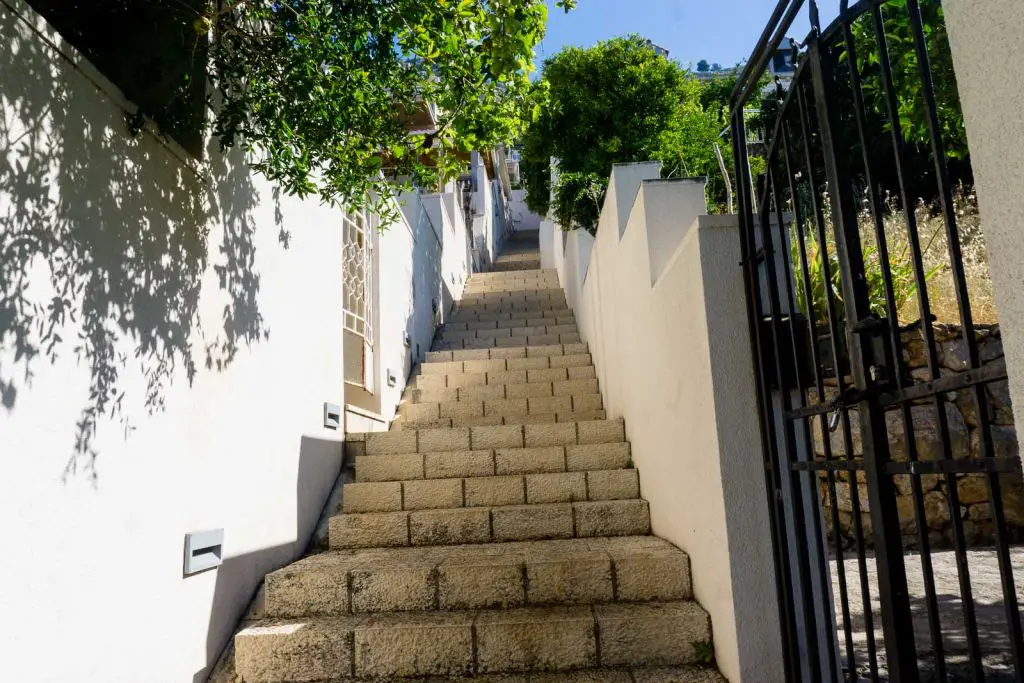
We stayed in an Airbnb with perhaps some of the best views of Dubrovnik (I suppose all their neighbors could make the same claim). Our apartment had a deck with 180 degree views of the Adriatic, Lokrum island, and the old town. The room itself was nothing to write home about, but the views more than justified the $100/nt we paid.
We would make it a priority to wake up early in the morning to enjoy the sunrise with bread, cheese, and salame from the nearby grocery store as well as be home in time to enjoy the sunset with Croatian wine. The owner of the house was a very nice Croatian woman (forget her name) that made sure we always had what we needed. It’s not hard to see why the locals are so happy when they get to wake up to that view every morning.
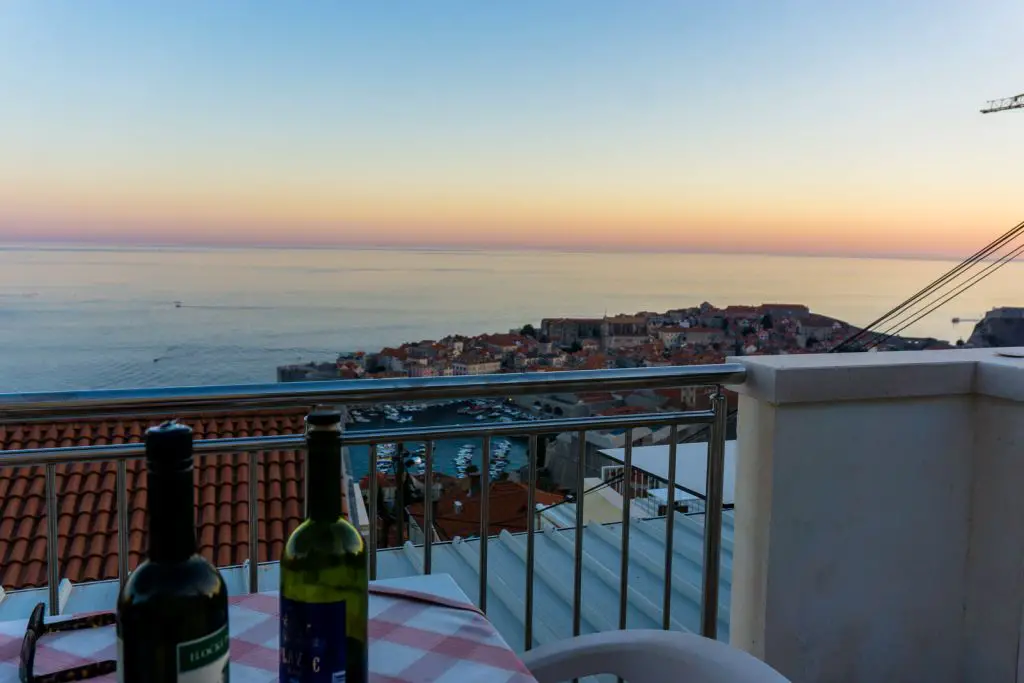
To stay in Ploce, be prepared to walk up many stairs. These neighborhoods have been around for centuries and stairs are the only mode of transportation. From our apartment to the old town, it was almost 400 stairs! The location is also perfect because the stairs literally took us directly into the old town. Coming home from a big meal was tough I have to admit. Our amazing views were paid for by sweat and sore calves. Well worth it in my opinion.
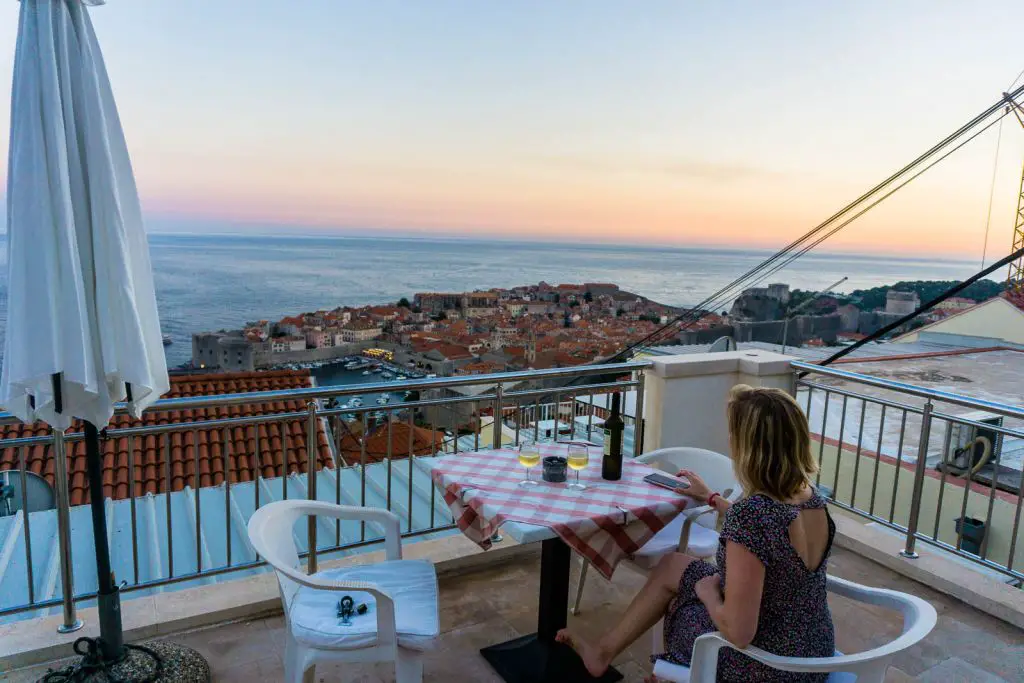
Where to eat and drink
Having just come from Belgrade, Serbia and Kotor, Montenegro, I had grown accustomed to the ridiculously cheap prices of the former Yugoslavian countries. I was not prepared for Dubrovnik. Restaurants and alcohol are shockingly expensive. The city has really learned to capitalize on its tourist craze. The prices of drinks and food in the old town is roughly the same as prices in New York City.
Among the countless restaurants in the old town and surrounding areas, 90% of them serve the exact same menu. Octopus salad, Risotto (hugely popular in Dubrovnik) with different offerings, grilled seafood dishes, and simple meat dishes are on every single menu. Prices are roughly the same with risotto priced around 100 Kunas, and seafood/meat dishes between 150-200 kunas. A glass of wine is 25-35 kunas, and beer is 20-30 kunas. Delicious gelato can be had for 10 kunas however!
After I got over the sticker shock, there is top notch dining to be had here!
Lady Pi Pi
At the recommendation of our host, this place serves some of the best grilled meats in Dubrovnik. Located inside the old town near the Northern entrance, this restaurant serves up delicious seafood, chicken, beef, and of course cevapi all on a grill. I could smell the restaurant from 100 meters away and it was intoxicating indeed. There is always a queue so make sure to arrive early and prepare to wait. There’s nothing bad on this menu, seriously. But if you must need recommendations, get a bottle of the house wine and the mixed seafood platter and enjoy. The food and service here are top notch, as evidenced by its high ratings on TripAdvisor so make sure to eat here!
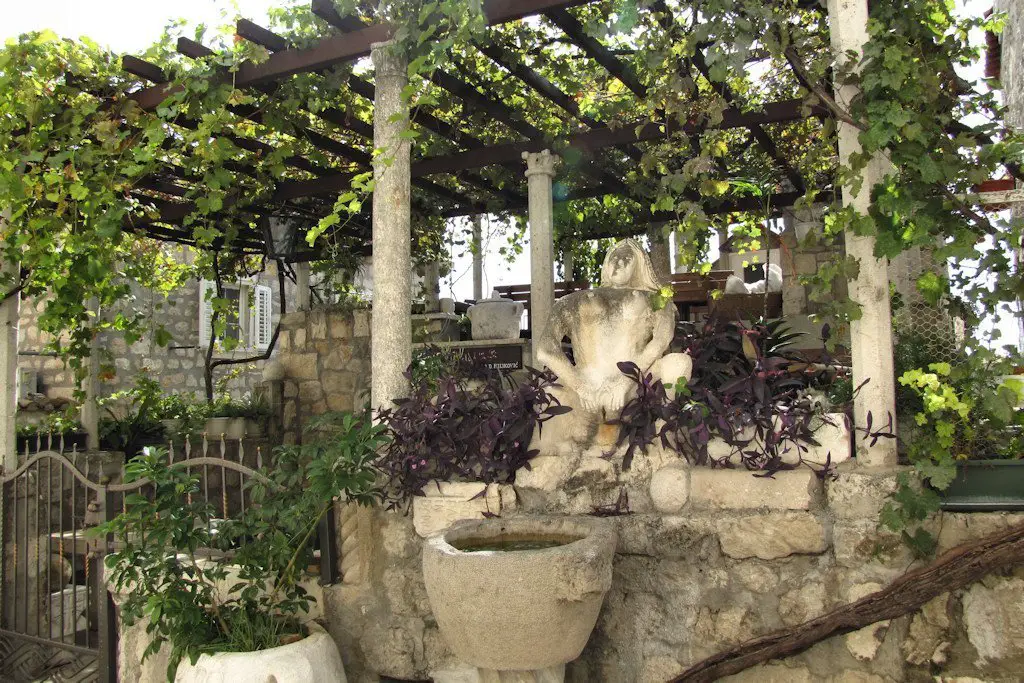
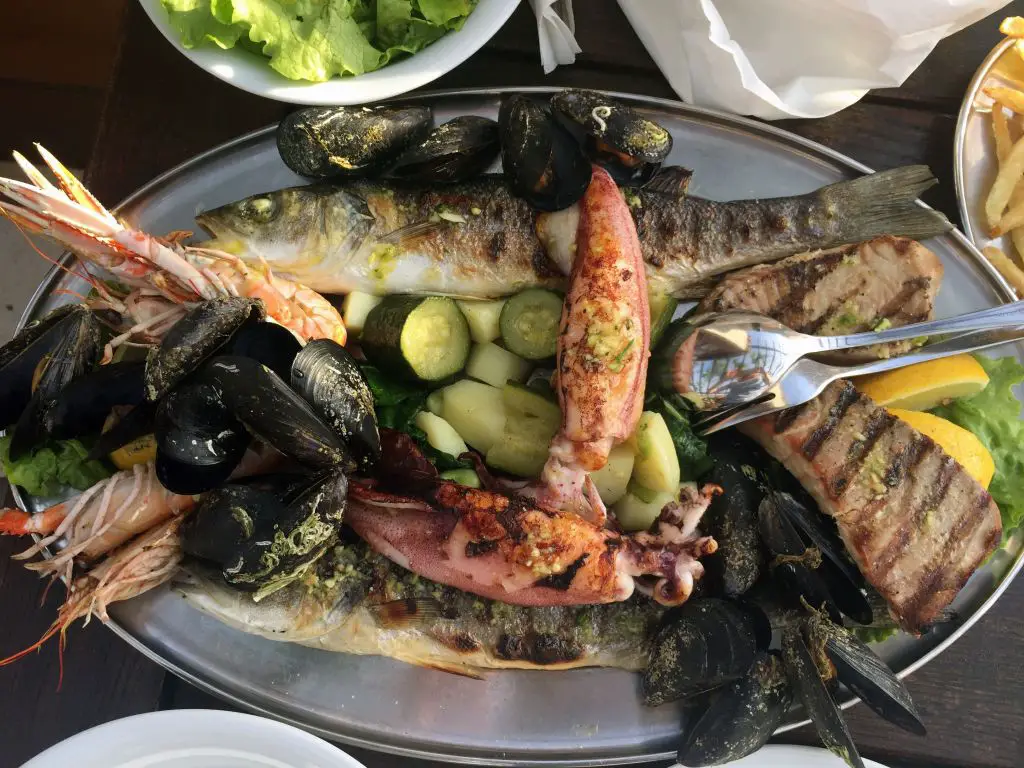
Also, come here for lunch and enjoy an amazing view of the old town with your copious amounts of meat and wine. Doesn’t get much better than this!
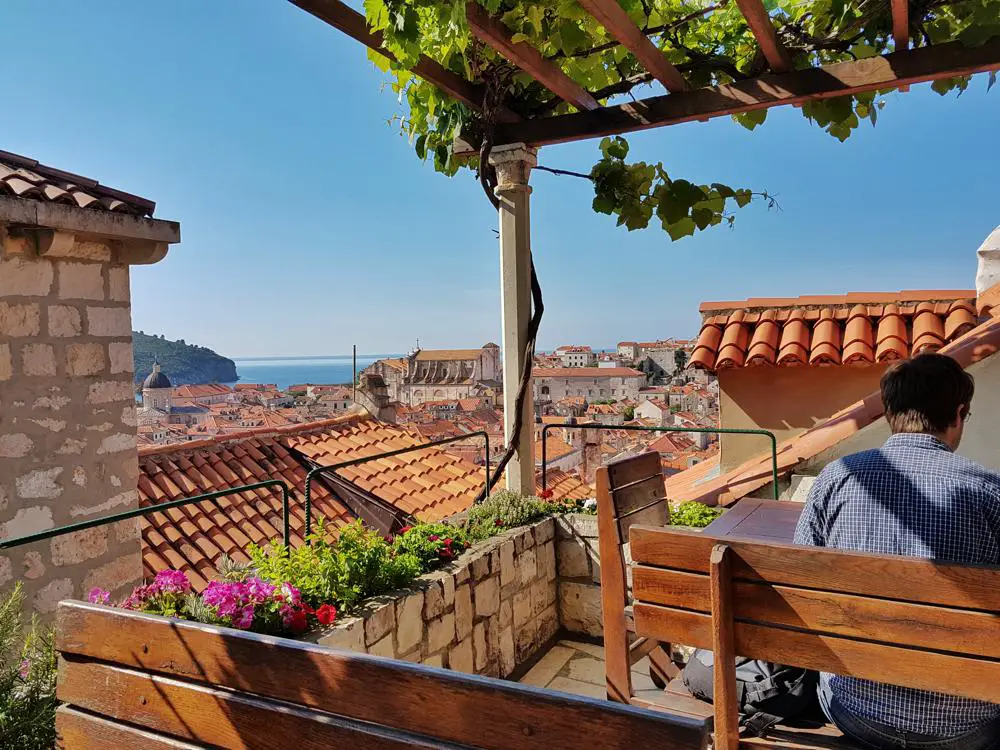
Horizont
Horizont was also recommended to us by our host. Located right outside of the old town, this restaurant is actually located on the stairs leading up into the Ploce area. The restaurant’s main draw is its outdoor seating set on the steps, with views of the sea. The food here is absolutely fantastic. Although it offers the same generic menu every other restaurant offers in Dubrovnik, I thought all of their “generic” items were delicious.
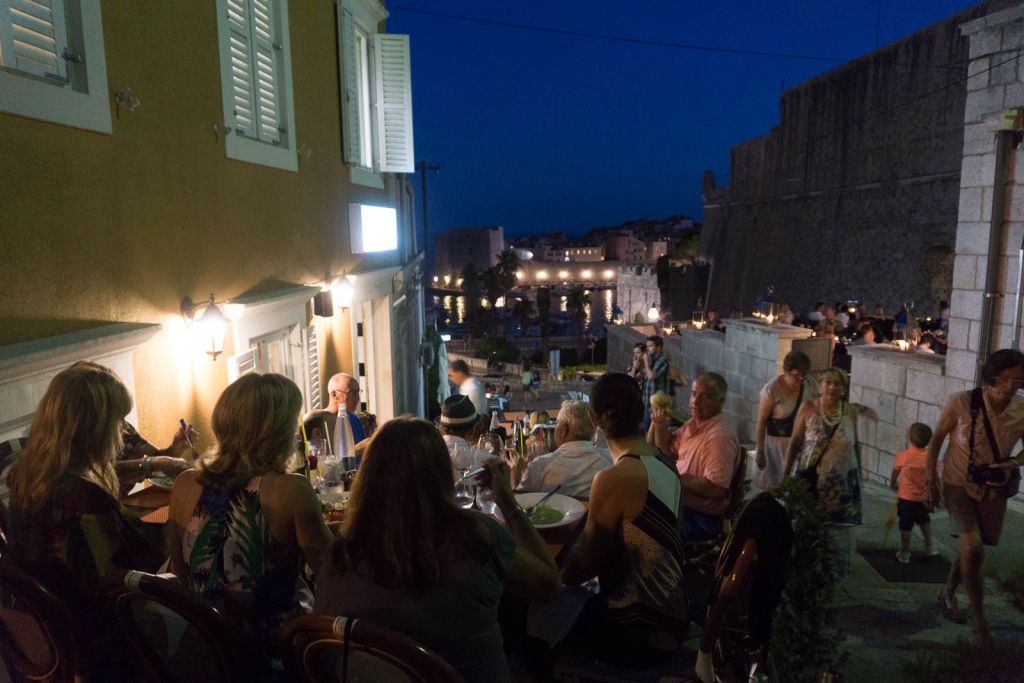
Cafe Bar Buza
One of the best happy hour options in Dubrovnik. This ultra unique bar offers sits at the base of the Dubrovnik walls and offers some of the best views in Dubrovnik. It’s a naturally formed cave that spans three stories and while not much in the way of foods, this place has all I needed for beers, wines, and cocktails. Buza translates into “hole”, which is crazily appropriate as this bar is literally a “hole in the wall”. This place is perfect for a drink at sunset or immediately after the city walls tour!
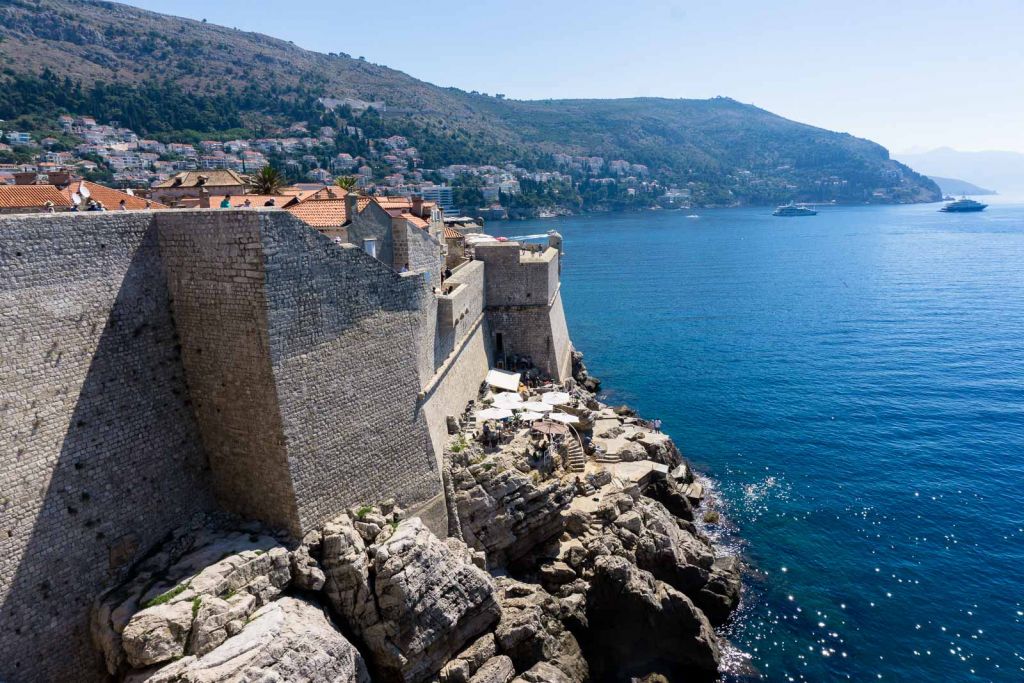
Yes Yes Foccacia Bar
If you’re looking for something quick but tasty, look no further than the focaccia sandwiches at Yes Yes. Located just outside of the city walls on the east side (opposite side of Pile Gate), this small shop is banging out some of the best sandwiches you can find in Dubrovnik. Not only were the sandwiches delicious, but they were huge and sure to fill you up.
Try the fish focaccia with fresh anchovies for what was surely my go to meal in Dubrovnik (couldn’t be bothered to eat at expensive restaurants every day).
Dubravka 1836
Located just outside of Pile Gate, Dubravka was my go to restaurant for breakfast. Normally, these type of restaurants located so close to the city center scream tourist trap but Dubravka was not one of them. With beautiful views of the city walls and Fort Lovrenac, this restaurant was an amazing spot for my breakfast and coffee.

The prices were very reasonable as well with breakfast omelettes costing less than 10 Euros. The portion sizes were very reasonable too for the money.
What to do in Dubrovnik
There are no shortage of things to do in Dubrovnik. It’s a historical city filled with an immense amount of wonderful sights.
Walls of Dubrovnik
In my opinion, the fort walls of Dubrovnik’s old town is the best attraction in town. Not only is there an immense amount of history to be learned but it also offers some of the best views of this picturesque UNESCO world heritage site. I’d highly recommend taking a tour of the walls. There are plenty to choose from but I thought my guide from Dubrovnik Walks was fantastic.
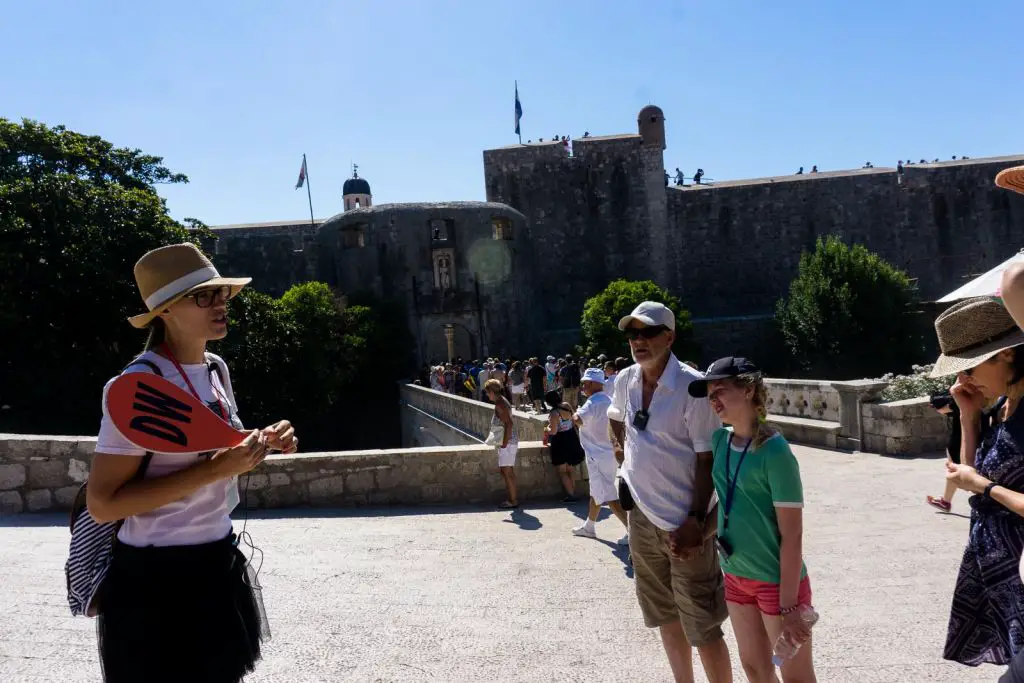
The cost of the tour is ~120 kunas and lasts for 2.5 hours. They’re offered two times a day, once in the morning, and another around sunset. There is also an additional admission cost of 150 kunas that is separate from the tour price and tickets can be purchased after entering from the west gate.
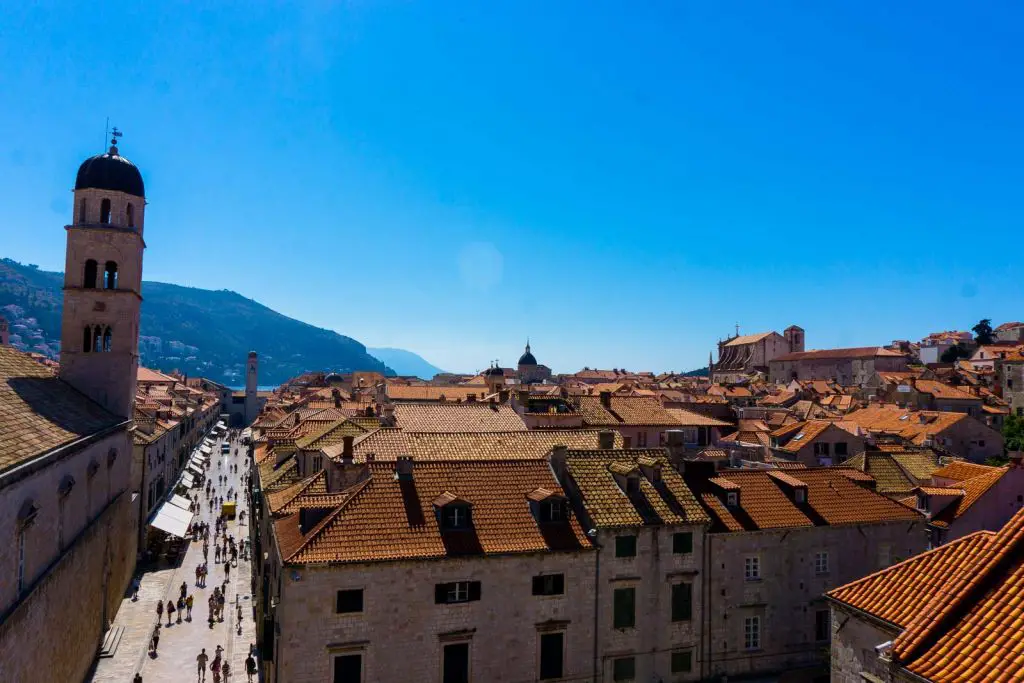
I thought our guide did an amazing job explaining the history of Dubrovnik. The walls were first built in the 9th century AD. Since then, the walls have been damaged, repaired, restored, and fortified many times. Dubrovnik never had much of an army throughout its history so the walls were its most important defense. During the Yugoslav wars of the 1990s, shelling from the Serbian army camped on the Herzogovina mountain side damaged the walls and many of the houses within the old town.
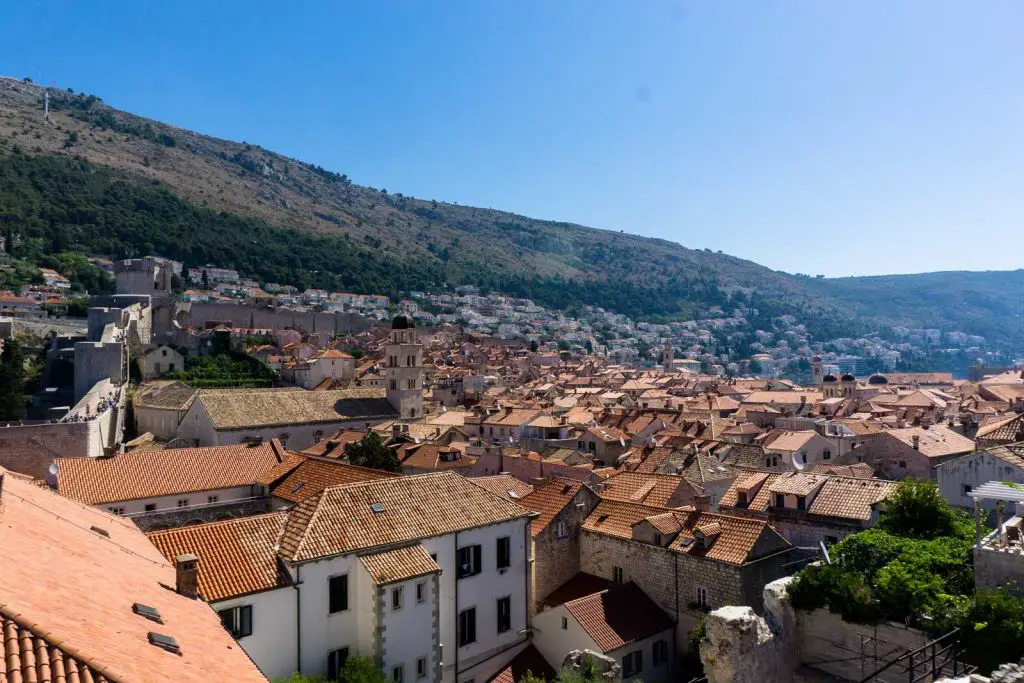
The views are absolutely fantastic from the walls. It’s hard to take a bad picture because you have the blue Adriatic on one side, mountains on the other, and ultra quaint buildings with their iconic orange rooftops. Orange rooftops which in fact, have only been around since after the war ended as UNESCO provided Dubrovnik with funding to replace the rooftops on the buildings damaged during the war!
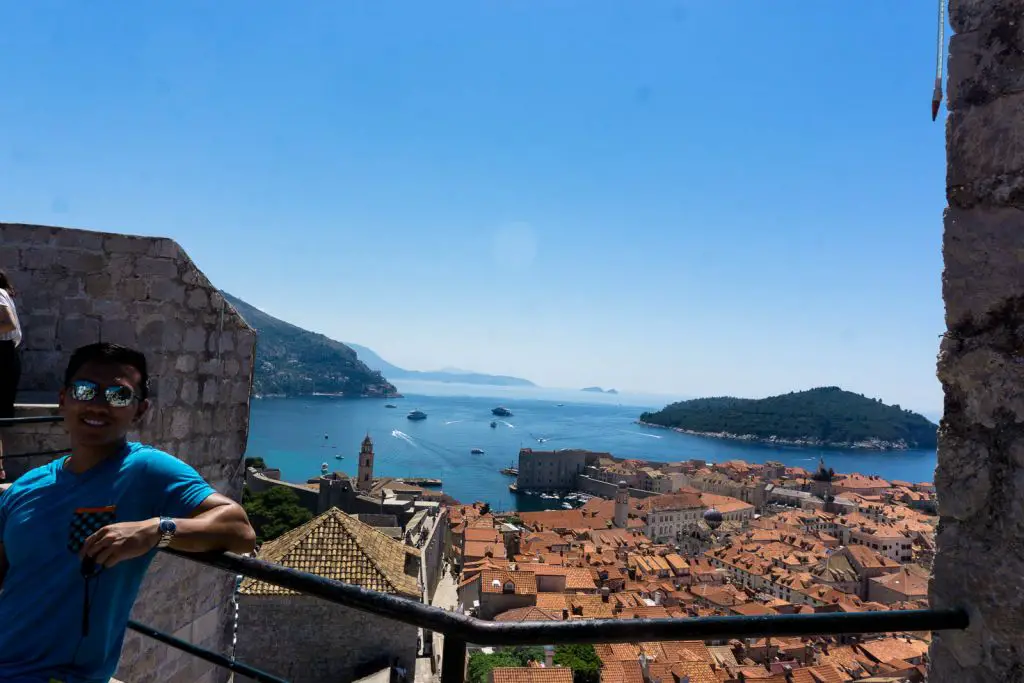
The walls do get packed during the day so I would recommend visiting in the early morning or for the sunset. There is no shade on the wall and it gets very hot during the summer months, which is another reason why I recommend visiting during those times.
Enter Through Pile Gate
Most visitors enter Old Town through Pile Gate, a stone portal dating to 1537. Above the gate, a statue of St. Blaise, the city’s beloved patron saint, welcomes travelers, holding a model of Dubrovnik in his hands. The gate was once drawbridged and heavily guarded—today it’s a busy entry point but still feels like a grand threshold into another world.
Right after stepping inside, you’ll find the Onofrio Fountain, a large circular fountain built in the 15th century to bring water into the city. Locals still drink from it today—carry a reusable bottle and fill up like they do.
Insider tip: For a quieter entrance, skip Pile Gate and use Ploče Gate on the eastern side. It’s less crowded and gives you immediate access to the Dominican Monastery and the harbor.
Stroll Along Stradun
The polished limestone boulevard of Stradun (or Placa) is the heartbeat of Dubrovnik. Once a marsh that was drained in the 12th century, it became the city’s central promenade, lined with uniform baroque buildings rebuilt after the devastating 1667 earthquake. Today, it’s home to gelato shops, cafes, and a mix of locals and tourists.
During the day, Stradun bustles with life, but at night, when the marble stones reflect the glow of lanterns, the atmosphere becomes magical—almost cinematic. Major events, like the opening of the Dubrovnik Summer Festival, take place here, so the street has been a gathering place for centuries.
Insider tip: Don’t sit down for a meal directly on Stradun—prices are sky-high. Instead, enjoy a coffee or gelato here, then slip into the side streets for more authentic dining.
Explore the Rector’s Palace
The Rector’s Palace was once the seat of government and home to the elected Rector of the Republic of Ragusa, who served just one-month terms to prevent corruption. Built in the 15th century, it blends Gothic, Renaissance, and Baroque styles—a result of centuries of modifications after fires and earthquakes.
Inside, you’ll find historical artifacts, portraits of former leaders, and a sense of the city’s glory days when Ragusa rivaled Venice in maritime trade. The courtyard often hosts classical concerts, adding a layer of atmosphere to this already historic site.
Insider tip: Time your visit with a concert in the palace courtyard—it’s one of the most memorable cultural experiences you can have in Dubrovnik.
Visit Sponza Palace
Sponza Palace is one of the few major buildings that survived the 1667 earthquake nearly intact. Built in the 16th century, it was once a customs house where merchants declared their goods. Today, it holds the State Archives, with documents dating back to the 10th century.
The palace’s loggia (open courtyard) is also a memorial to Dubrovnik’s fallen defenders from the 1991–92 siege, offering a poignant reminder of the city’s resilience.
Insider tip: Visit during the Dubrovnik Summer Festival—the palace courtyard becomes a stage for cultural performances, connecting the past with the present.
Step Inside Dubrovnik Cathedral
The Cathedral of the Assumption of the Virgin Mary is the city’s grandest church. According to legend, King Richard the Lionheart helped fund its construction after surviving a shipwreck on Lokrum Island in 1192. The current Baroque structure was built after the 1667 earthquake destroyed the earlier cathedral.

Inside, you’ll find works by Italian masters and an impressive treasury of gold and silver relics, many crafted by local goldsmiths during Ragusa’s golden age. The treasury is one of the finest in Croatia, with items dating as far back as the 11th century.
Insider tip: Combine your visit with the nearby Jesuit Stairs—you’ll recognize them from Game of Thrones but also from centuries of real processions leading to the beautiful Church of St. Ignatius.
Check Out the Franciscan Monastery
This monastery is a peaceful oasis in the middle of Old Town. Its highlight is the 14th-century pharmacy, one of the oldest in Europe still in operation today. Originally set up to serve the friars, it has been open to the public since 1317. You’ll find jars, tools, and even ancient medical recipes inside the small museum.
The monastery’s cloister, with its arcaded courtyard and orange trees, is one of the most photogenic corners of Dubrovnik. It’s a perfect stop if you need a break from the busy streets.
Insider tip: The pharmacy still sells herbal remedies and creams made according to centuries-old recipes—unique souvenirs that go beyond the usual magnets and t-shirts.
Wander the Side Streets and Staircases
Dubrovnik isn’t just about its monuments—it’s about the small details. The side streets reveal laundry fluttering overhead, tucked-away chapels, and cozy konobas serving traditional Dalmatian dishes. Climb the steep staircases to reach quieter residential areas where cats nap in the sun and locals gather in courtyards.
Many of these alleys are nearly empty compared to Stradun, so they’re perfect for photos. The higher you climb, the better the views you’ll find over the rooftops.
Insider tip: Try Prijeko Street, one block parallel to Stradun, for excellent seafood restaurants with a more authentic vibe.
Climb Up to Fort Lovrijenac
Rising 37 meters above the Adriatic on a rocky promontory, Fort Lovrijenac was Dubrovnik’s first line of defense against the Venetians. A bold inscription over the entrance reads: “Freedom is not to be sold for all the treasures in the world.”

Inside, you’ll find thick stone walls, cannons, and stunning views back over the Old Town. The fort is also home to performances during the Dubrovnik Summer Festival, particularly Shakespeare plays.
Insider tip: Your city walls ticket often includes entrance to Lovrijenac—don’t throw it away after the walls!
Day trip to Lokrum
Everyone in Dubrovnik kept telling me to go to Lokrum, especially during the summer months when tourists are everywhere. Lokrum is the nearby island which also happened to be the film location for Game of Thrones’ Iron Throne and Qarth.
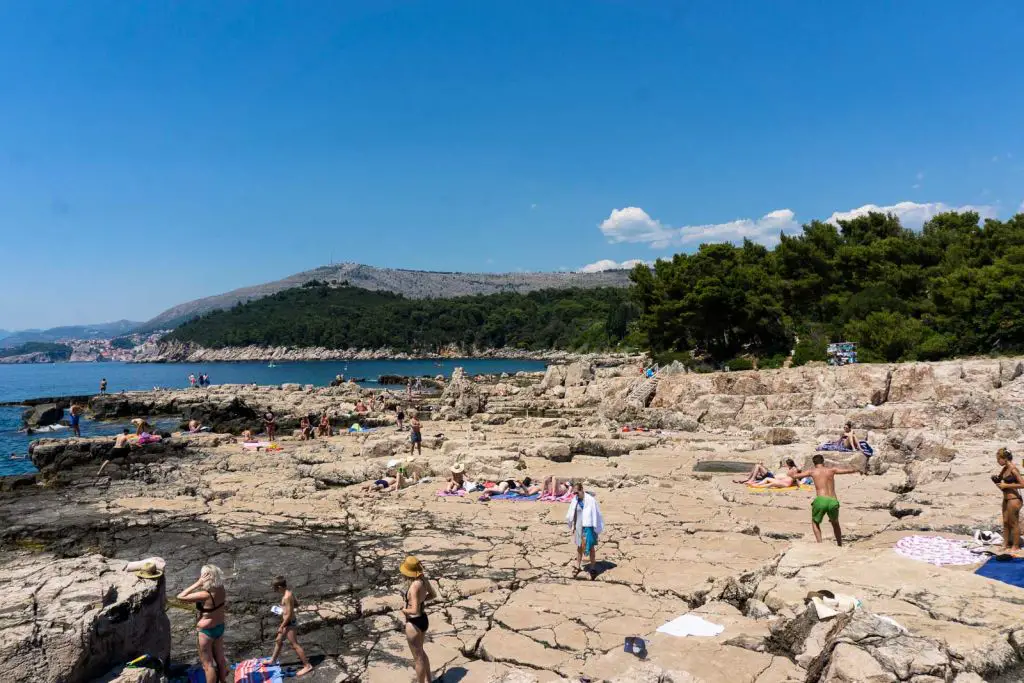
It’s a short 20 minute ferry ride from Dubrovnik with ferries leaving from the Old Town dock every half hour. Roundtrip tickets are 100 kunas.
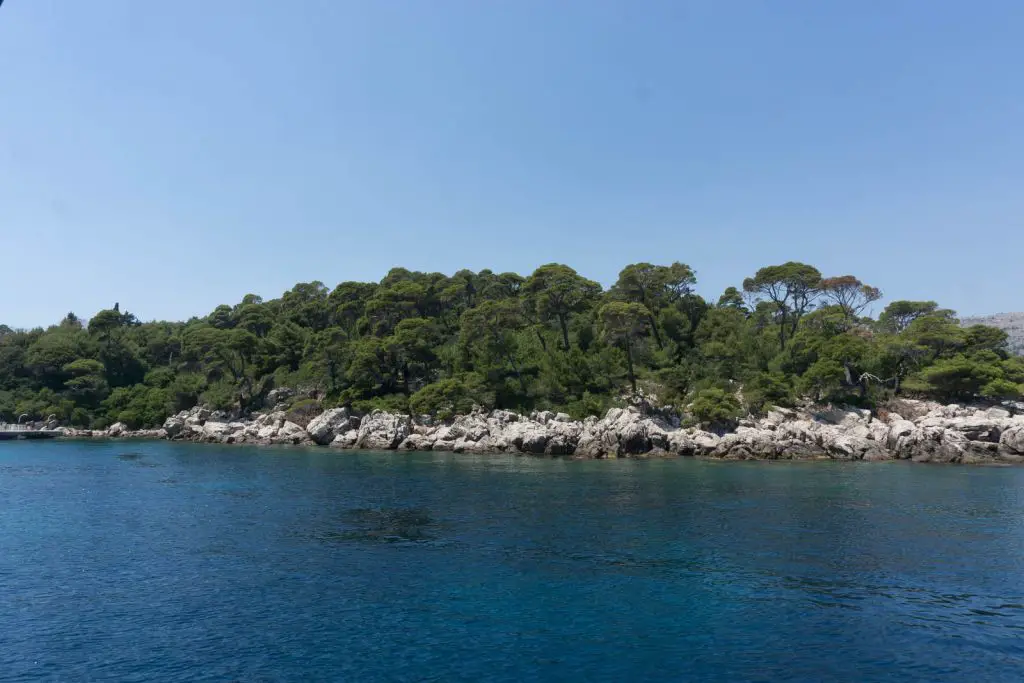
The island itself offers hiking trails, and “beaches” as the locals like to refer to it. Beaches in this part of the Mediterranean mostly constitute rock beaches. While I’m not a fan of rock beaches, it was nice to escape Dubrovnik, especially as there is only one semi-public beach in town. This island also does see its fair share of tourists, as everyone else seemed to get the same memo as me: “escape the city by going to Lokrum”. This island doesn’t allow overnight stays or cars. In fact, the only permanent residents of this island are the abundant amounts of peacocks that roam freely and interact with visitors.

Ride the cable car
One of the most popular sights after the old town is the cable car that goes to the top of the city. The cable car is located just outside of the old town a few blocks inwards into the Ploce district. The 778 meter journey gives you breathtaking views over the Old City. The upper station has two panoramic terraces equipped with binocular telescopes, a snack bar, a panoramic restaurant, a souvenir shop and more. The lower station is at the beginning of King Petar Krešimir Street where tickets can be bought for 120 kunas.
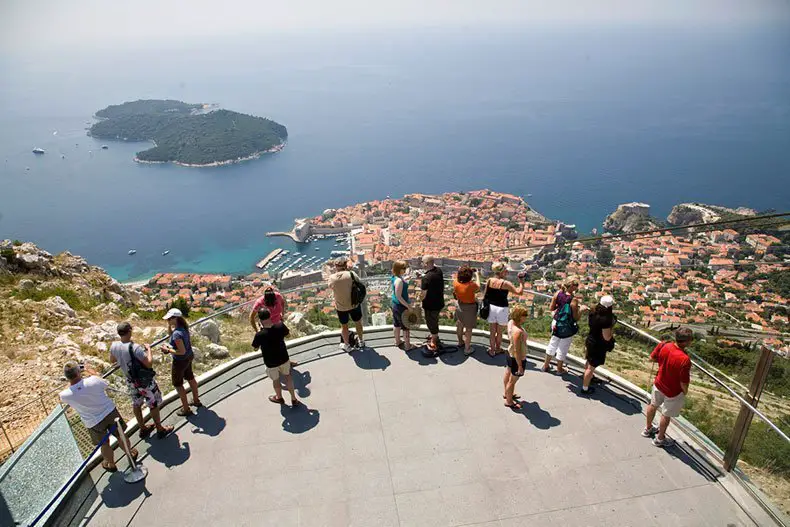
Not only are the views spectacular but the Restaurant Panorama at the top of Mount Srđ is fantastic for its food. The tram leaves every 15 minutes and runs until 10pm. I met plenty of people in Dubrovnik that did the cable car to rave reviews. Since we stayed on the hill in the Ploče district with amazing views of the old town on our front porch (for free), there really was no need to go on the cable car. Highly recommended otherwise however!
Day trip to Korcula
There are plenty of day trip options to be had in Dubrovnik. The most popular ones are day trips to the nearby island of Korcula, or a day trip to Kotor, Montenegro, and a day trip to Mostar, Bosnia and Herzegovina. Since I was already in Kotor before coming to Dubrovnik, I elected to check out Korcula for the day which was an amazing time. I would highly recommend if time warrants to visit Korcula for the day. It is much more relaxed and has far fewer tourists than Dubrovnik.
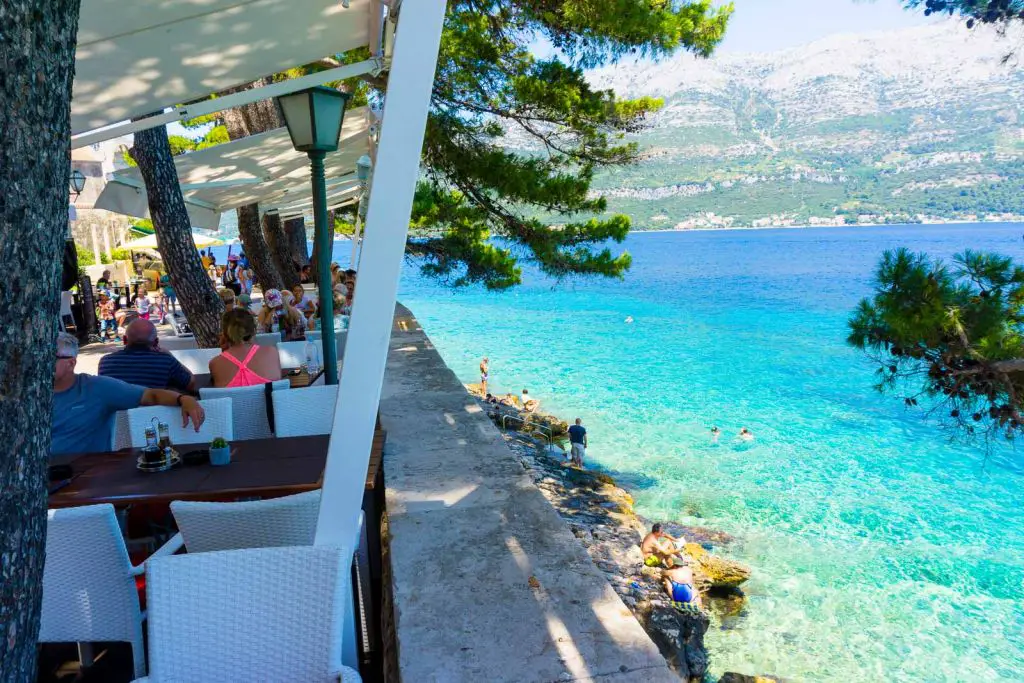
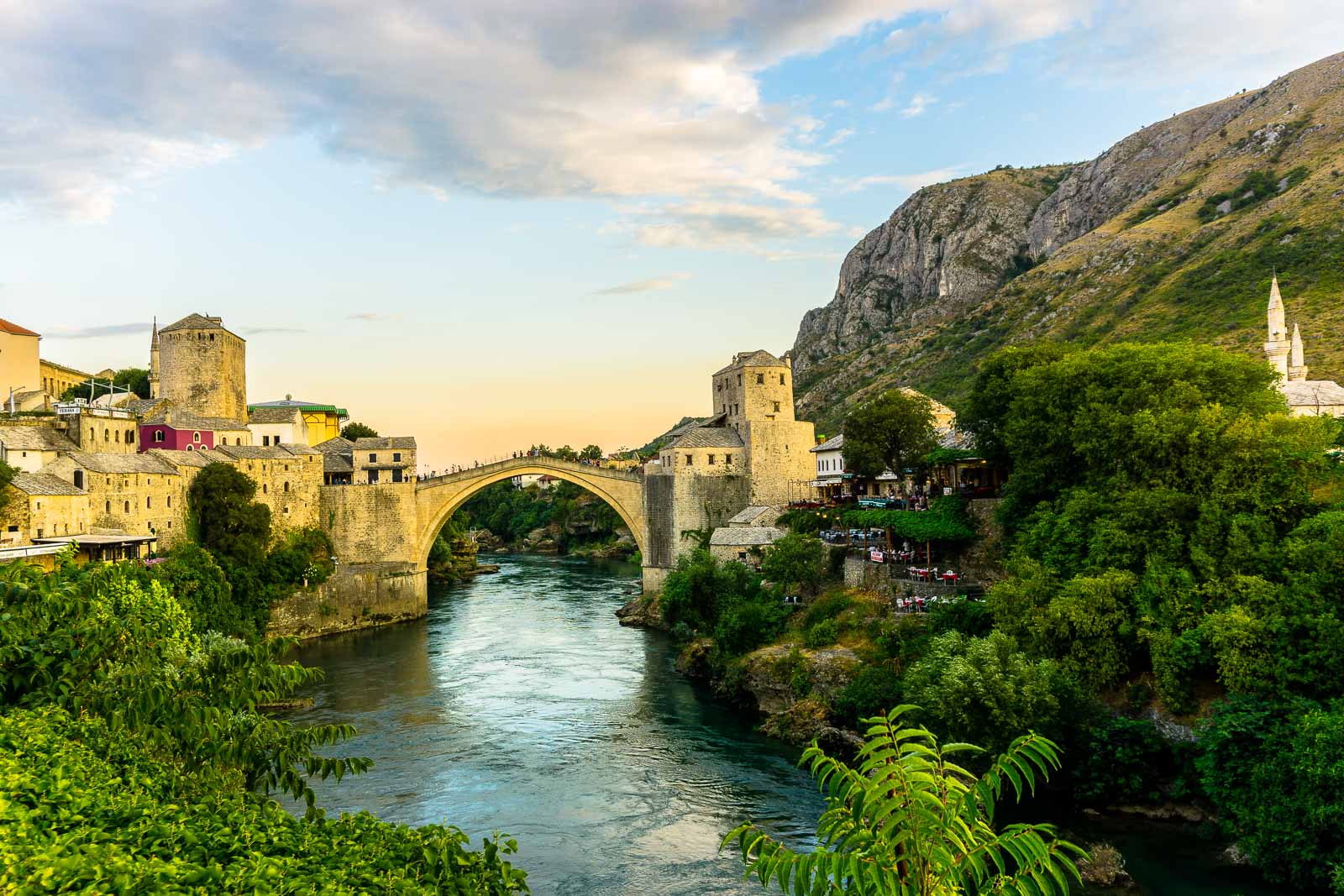
We also went on a day trip to Mostar, stopping in the Kravice waterfalls, but we stayed the night in Mostar as it was amazing and totally warrants at least one night!
Tourism problem in Dubrovnik
I made the time old mistake of visiting Dubrovnik in the summer. The crowds were endless and the old town felt more of an amusement park than a historical center. The fault is not all on the tourists either. Tourism is the biggest industry in Croatia, especially in Dubrovnik. Cruise ships bring in thousands of people at once, and businesses take advantage by catering to them. After spending a few days here, it’s not difficult to see why it’s such a draw for visitors. But you can set yourselves apart by learning to speak Croatian. That’s sure to make a great impression on the locals.
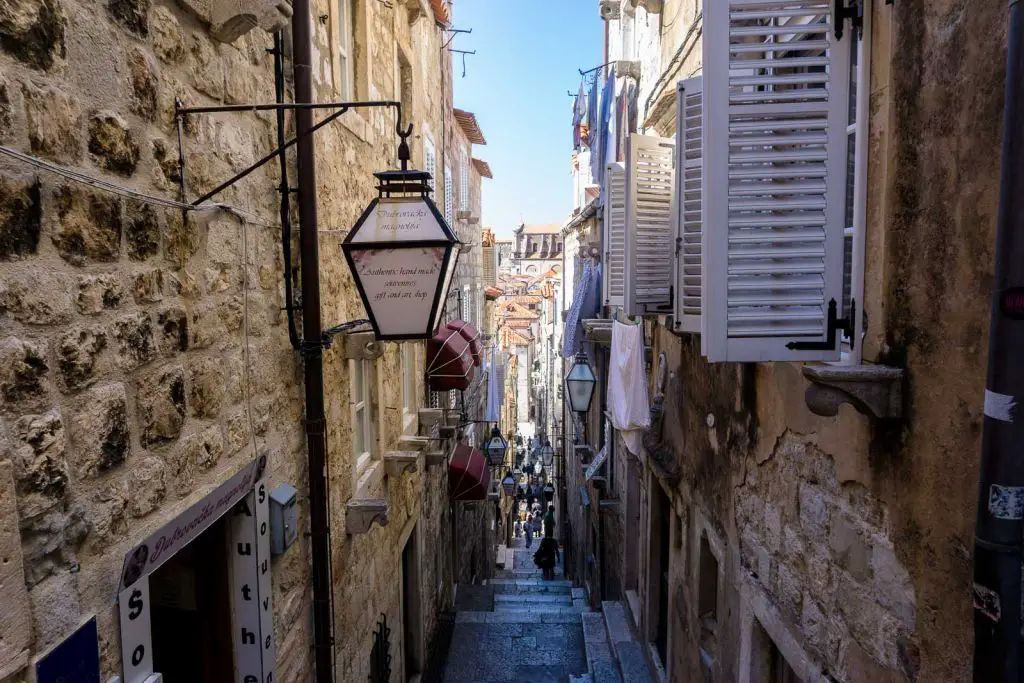
Our guide for the Walls tour told us UNESCO paid a visit to Dubrovnik a few years ago. The same UNESCO that helped the cit rebuild after the war by providing entirely new roofing for most of the buildings in the old town. Yes, the iconic orange stucco of the old town is in fact only 20 years old! UNESCO told the town of Dubrovnik that there were far too many tourists for the old town to sustain. They recommended no more than 8000 visitors a day. Cruise ships alone bring in almost 8,000 people a day in the summer months! Anyway, I’m sure it won’t be long before Dubrovnik follows suit with the popular Italian cities and does something to curb tourism.
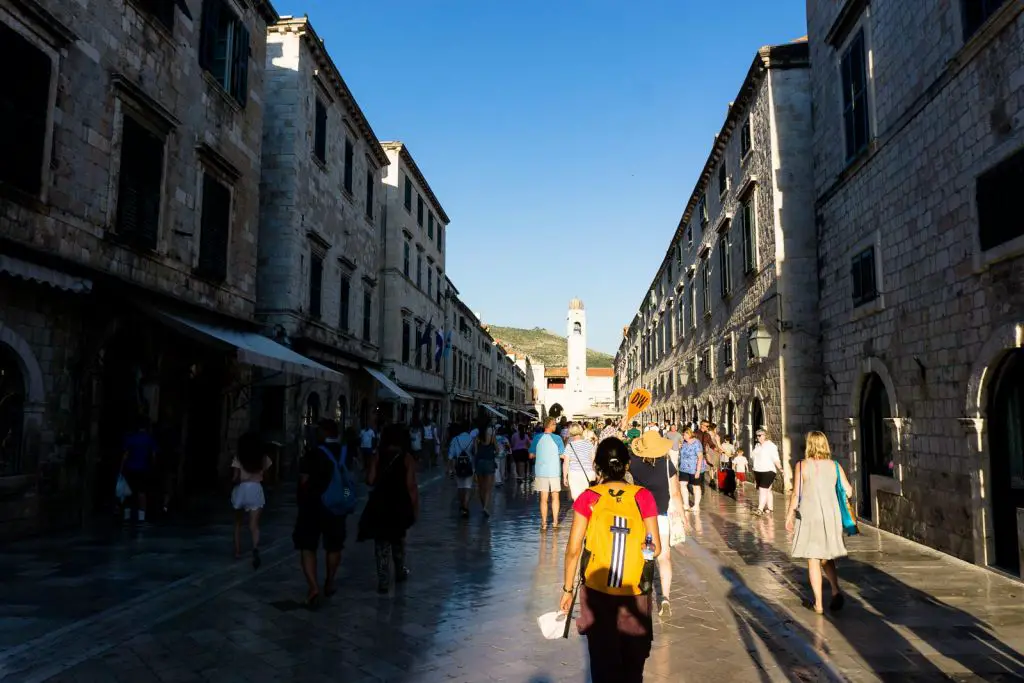



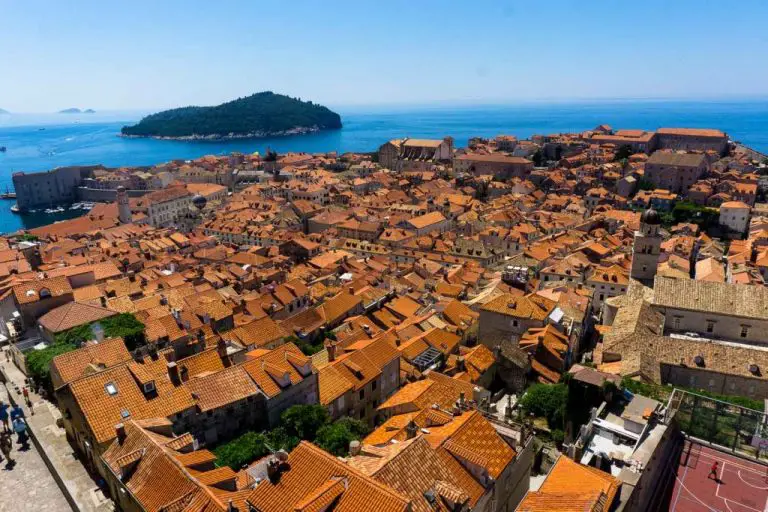

This guide is amazing! I’ve been planning a trip to Croatia, and your itinerary makes it so much easier.